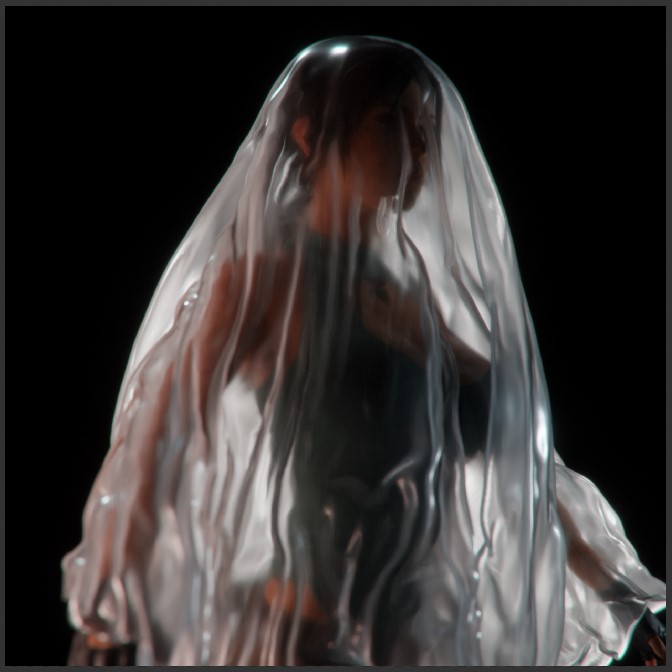I recently wanted a PVC plastic material for a render and after looking around realised that the majority of materials are focused on hard plastic and not the soft flexible PVC you might make clothing or bags from.
With that in mind why not come along on an adventure and take a look at my version of the material.
Cloth Mesh Notes
The look of soft PVC, like most other cloth is heavily influenced by your model. More so here because PVC is transparent. I’ll give a few general tips to improve the look but a good mesh that has folds/movement like PVC is a must.
First let’s take a look at the node setup. Click for a larger view.

Not a massively complicated setup, but these are the nodes I’ve found make a fairly nice soft PVC material.
Now a quick preview of what the material looks like. Please excuse the A-Posing Lara, I was using it to see what the material looked like next to skin and was too lazy to make something.

I don’t think the cloth looks ‘heavy’ enough, but it worked well enough for testing the node setup.
Soft PVC Node Setup
I’m going to go through a few of the important nodes in this setup so you know what to adjust for different ‘looks’.
Principled BSDF
First up is the Principled BSDF. This is the main part of the material. Changing properties here has a large effect on the material.
You can change the PVC color here, note that because the Principled BSDF is also giving the material its transmissive property you should avoid dark colors to prevent it from becoming too dark.
Change the Specular value to adjust how diffused the reflections appear, giving the PVC a rougher look.
Everything else should be kept the same with the exception of Alpha which can be used to make it more glassy/transparent if needed.
Noise Texture + Map Range
Adjust the settings here to change the randomised noise pattern used to give variation in the roughness of the material. I like large noise patterns, but you can change the scale here depending on the scale of your object. Play around to see what you like.
The Map Range node here is used to control the smoothest possible value and the roughest possible value taken from the noise texture. 0 is perfectly smooth, 1 is perfectly rough. Adjust to your taste.
Layer Weight / Fresnel + Map Range + Volume
These nodes mix transparency and translucency to the material to better replicate PVC. The IOR in both the Principled and Fresnel nodes should match and are set by default to the approximate IOR of PVC.
The Layer Weight blend can be used to adjust how much translucency is mixed into the material. I found 0.3 to be nice, but feel free to play around. The translucency mainly represents the cloudiness of the PVC so for glass clear PVC you may want to lower this further or even remove it.
The Map Range from the Fresnel is used to control the Volume. In the same way as the noise you should adjust this as needed, or you can leave the Volume out if it is too resource intensive or if your PVC should be clearer.
Soft PVC Mesh Tips
For this node setup to work there are a few ‘must haves’ for your mesh.
It must have thickness of some kind, this is generally best added via a solidify modifier. PVC for clothing is normally super thin (somewhere around 200 microns) so be sure to set the thickness as appropriate.
The hardest part is having a good looking mesh. Blender’s cloth sim is a great option sometimes. If you have access to it Marvellous Designer is far superior (Sorry Blender). If you are handy with sculpting tools you can definitely sculpt it using the standard tools and the cloth brush.
That’s it. I’m fairly happy with this Soft PVC shader considering I don’t really dabble in nodes much. I had a lot of fun though so maybe there will be more in the future.
Be First to Comment